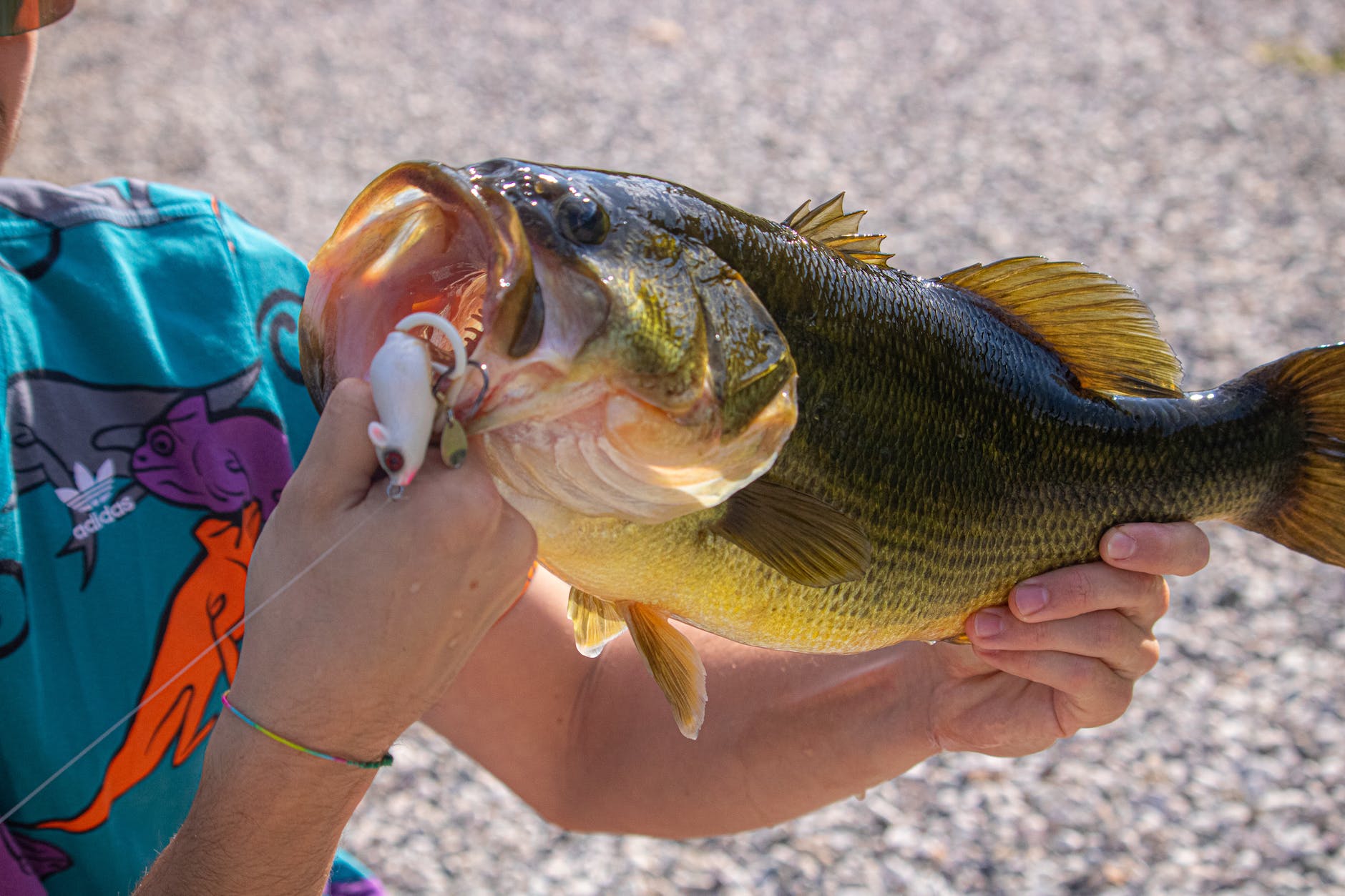Bass are among the most popular sport fish in North America, with avid anglers constantly seeking ways to catch them. But before you can successfully catch these tenacious predators, understanding their diet is crucial. In this comprehensive guide, we will discuss their food preferences, hunting strategies, and what lures work best for them.
Bass primarily feed on smaller fish, insects, and crustaceans. Their choice of prey often depends on their age, size, and environment. Now, let’s dive deeper into the world of bass and uncover their diverse diet and hunting techniques.
The Basic Diet of Bass: What Do They Eat?
Fish
One of the primary sources of food for bass is other fish. They are voracious predators that target and ambush smaller fish like minnows, shad, sunfish, and perch. The type of fish they eat generally depends on their habitat and the availability of prey species. In some cases, they may even feed on smaller bass when food is scarce.
Insects and Invertebrates
Although it may be surprising to some, bass also feed on insects, especially during their juvenile stage. Insects like mayflies, dragonflies, ants, and beetles comprise a significant part of their diet. Additionally, aquatic invertebrates such as crayfish and shrimp are a tasty treat for bass.
Frogs and Salamanders
Bass are opportunistic predators, meaning they will consume any food source available to them, including frogs and salamanders. When these amphibians venture too close to the water’s surface, they become easy targets for lurking bass.
Understanding the Hunting Techniques of Bass
Ambush and Surprise Attacks
Bass are known for their stealth and cunning, using their keen senses and natural instincts to hunt down unsuspecting prey. They often rely on ambushing their prey by hiding in various underwater structures like weeds, rocks, and wood.
Chase and Capture
Another common hunting strategy for bass is chasing and capturing their prey. They use their speed and agility to chase down smaller fish in open water. Once the prey is within striking distance, the bass will quickly pounce to secure their meal.
How Age, Size, and Environment Influence Bass Diet
Juvenile vs. Adult Bass
Young bass generally feed on insects and invertebrates, while adult bass primarily focus on consuming fish. As they grow in size, their preference for larger prey increases, allowing them to fulfill their energy requirements.
Location Matters
The diet of bass varies depending on their habitat. For instance, in large rivers or reservoirs, bass may feed on a wide variety of fish species, while bass in smaller ponds may favor frogs, insects, and invertebrates.
Matching the Hatch: Selecting Lures Based on Bass Diet
Knowing what bass are feeding on in your local area can help you choose the most effective lures. If bass are primarily preying on shad or minnows, using crankbaits, swimbaits, or jerkbaits that mimic these fish can increase your chances of success. Similarly, if bass are feeding on crayfish, soft plastic crawlers or jigs can be the ideal lure choice.
Conclusion
Understanding the diverse diet of bass is crucial for anglers who want to increase their catch rates. To recap, their diet includes fish, insects, and crustaceans, with preferences changing based on age, size, and habitat. By accurately replicating the prey species in your environment, selecting the right lure becomes easier, helping you outsmart these cunning predators.
FAQ
Q: What are the primary food sources for bass?
A: Bass primarily feed on smaller fish, insects, and crustaceans, with specific prey depending on their age, size, and habitat.
Q: How do bass hunt for their prey?
A: Bass employ ambush and surprise tactics, as well as chasing and capturing strategies, to secure their prey.
Q: Does the diet of a bass change as they grow older and larger?
A: Yes, juvenile bass tend to focus on insects and invertebrates, while adult bass primarily consume fish.
Q: How does the habitat impact a bass’s diet?
A: The location influences the availability of prey species, thus affecting the diet of bass in that particular area.
Q: How can I use this knowledge to choose the right fishing lure?
A: By selecting lures that closely resemble local prey species, you can increase your chances of enticing a hungry bass.

